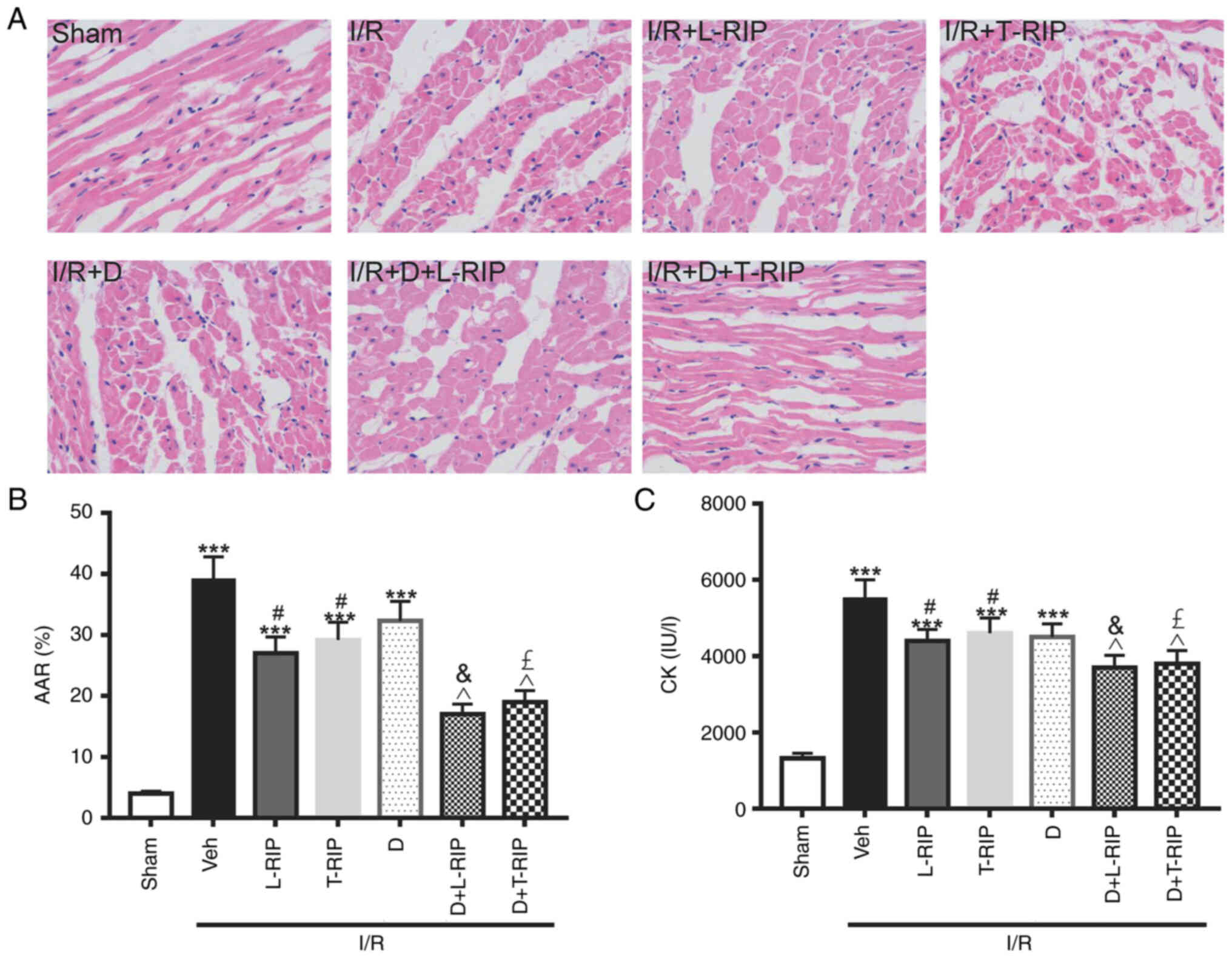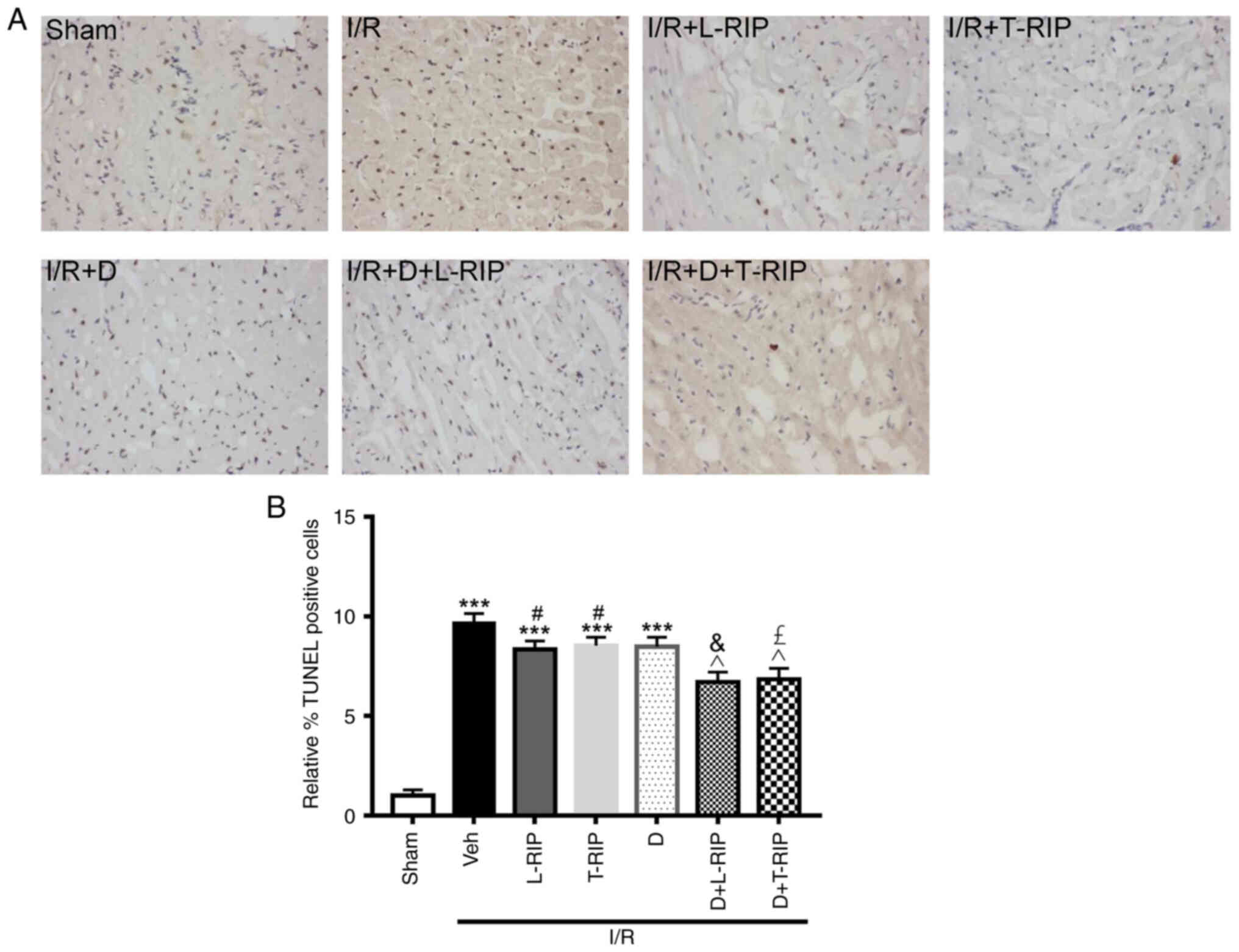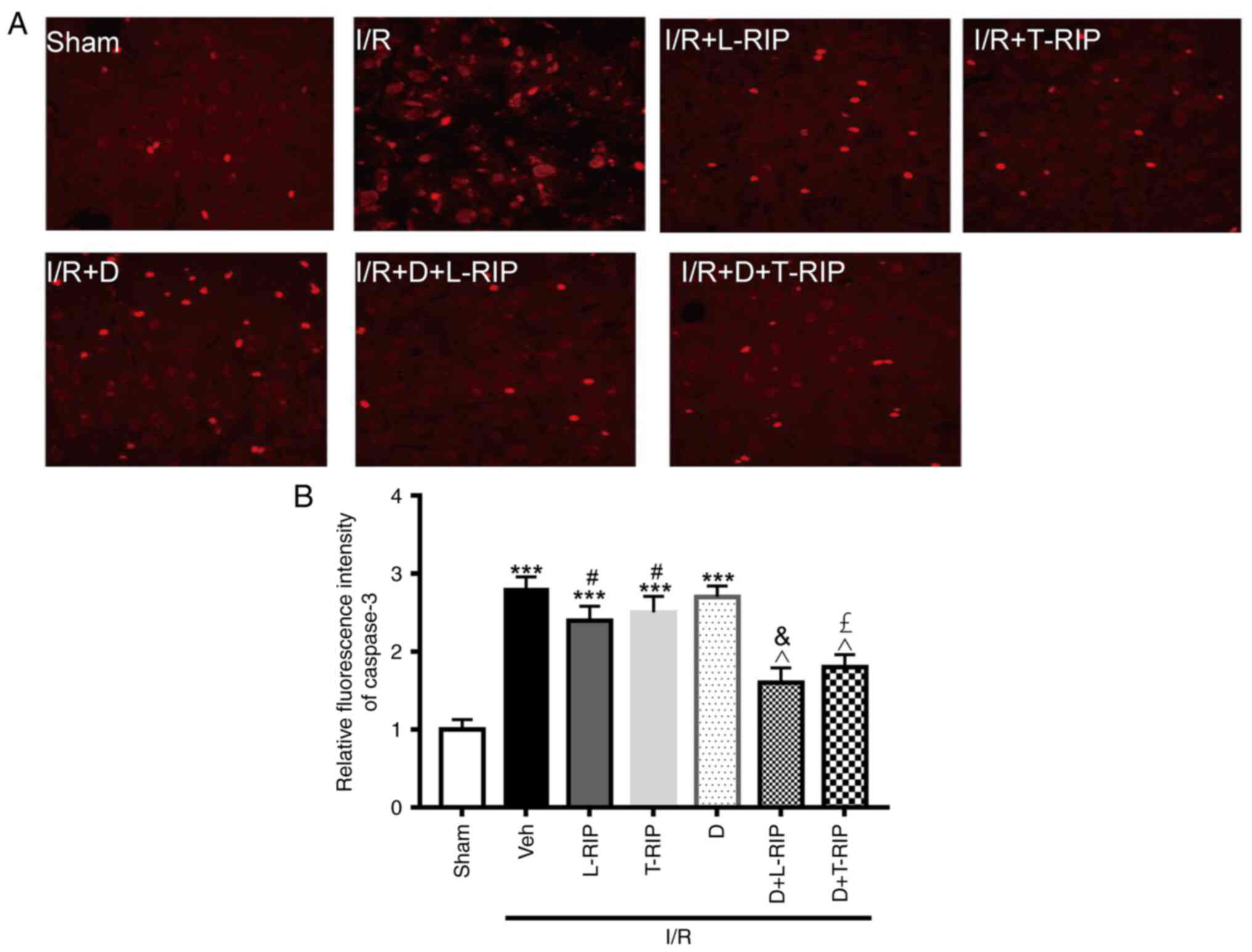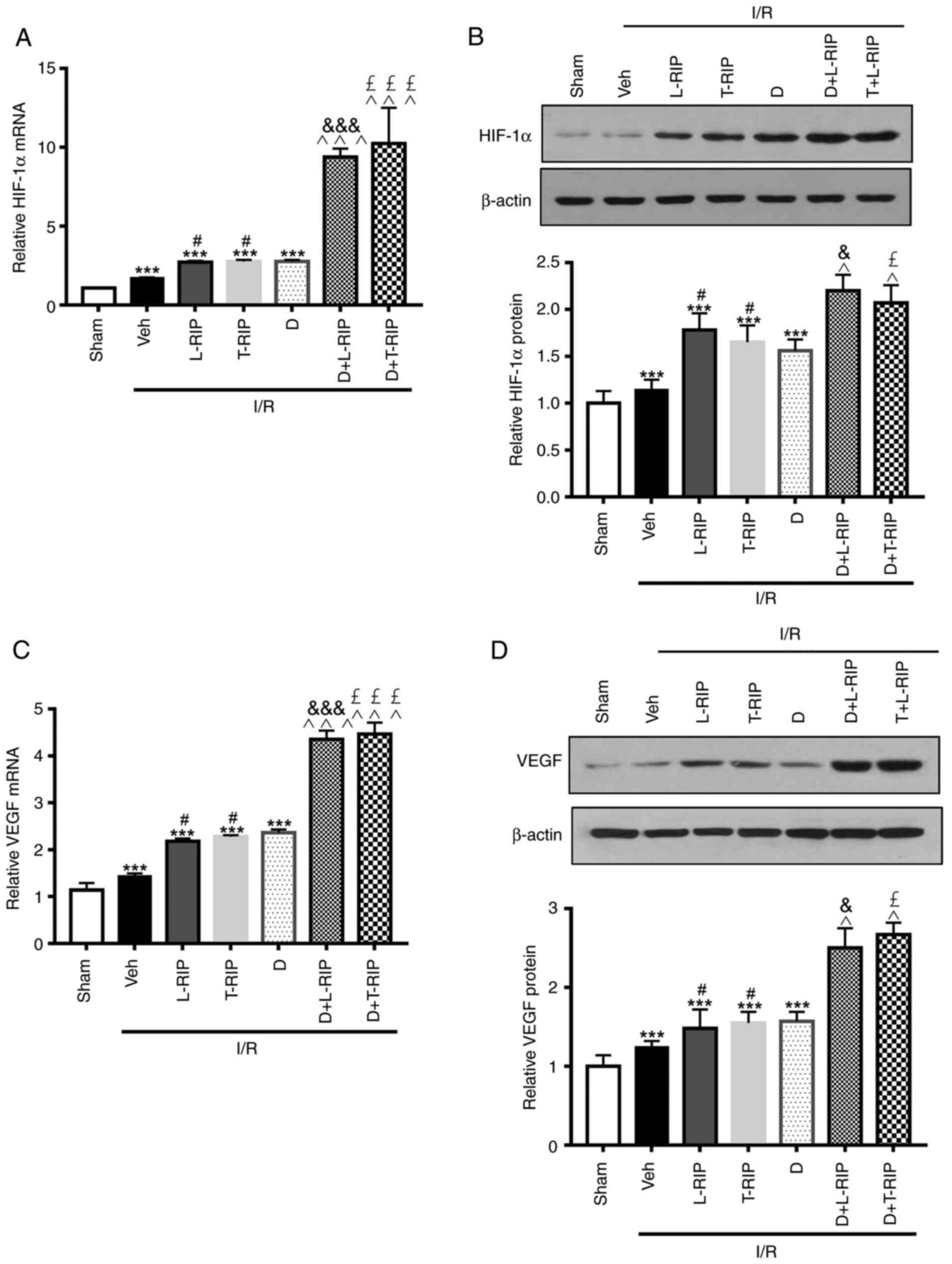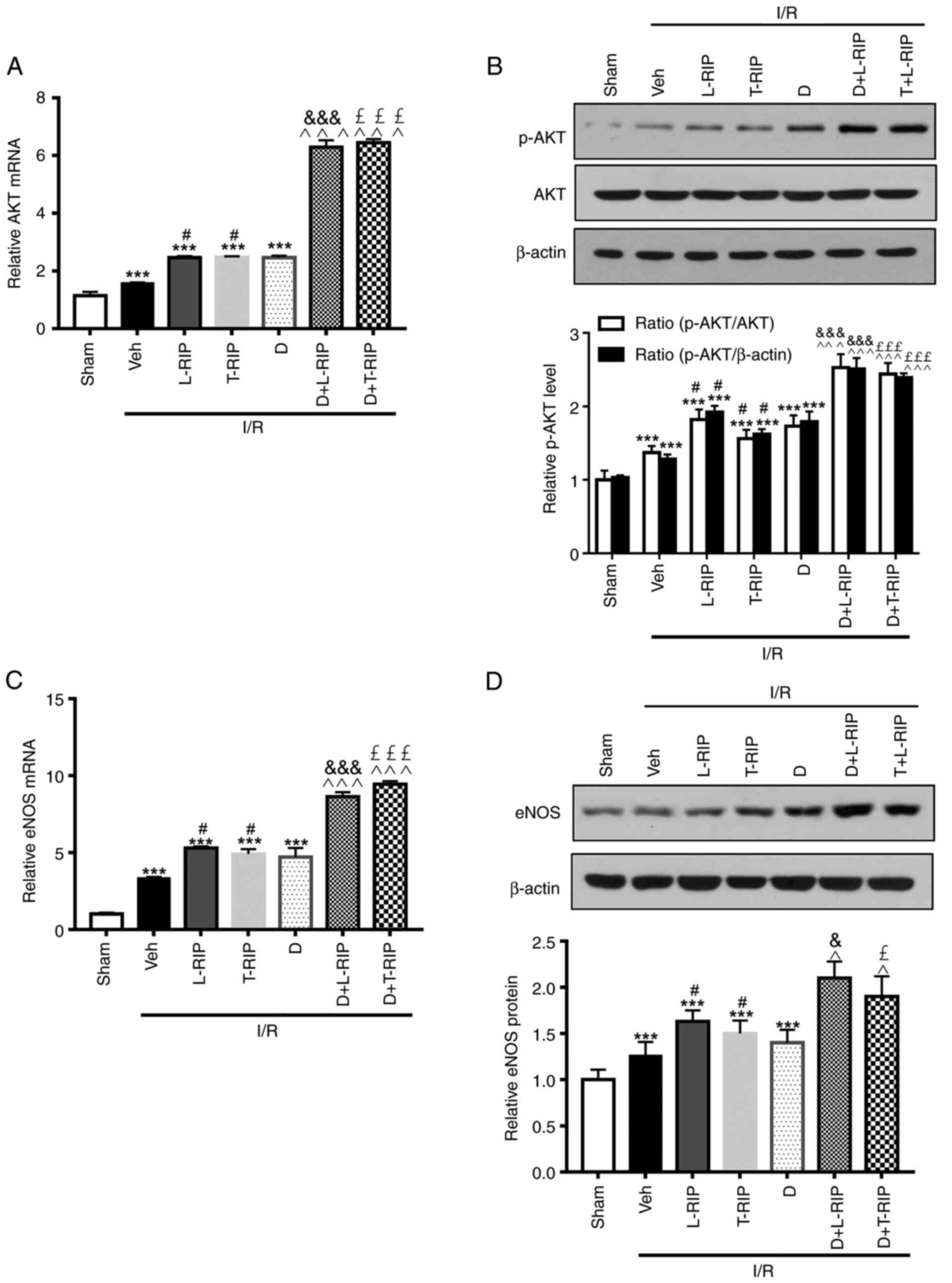|
1
|
Zhao S, Zhu L, Tinzin L, Huang F, Ma L and
Zhou Y: Acute myocardial infarction in a young woman: Unexpected
findings of a coronary occlusion. Leg Med (Tokyo). 42:1016622019.
View Article : Google Scholar : PubMed/NCBI
|
|
2
|
Ye Q, Zhang J and Ma L: Predictors of
all-cause 1-year mortality in myocardial infarction patients.
Medicine (Baltimore). 99:e212882020. View Article : Google Scholar : PubMed/NCBI
|
|
3
|
Berger JS: Platelet-directed therapies and
coronary artery bypass grafting. Am J Cardiol. 104 5 Suppl:44C–48C.
2009. View Article : Google Scholar : PubMed/NCBI
|
|
4
|
Zhang S, Wotzkow C, Bongoni AK, Shaw-Boden
J, Siegrist M, Taddeo A, Blank F, Hofstetter W and Rieben R: Role
of the plasma cascade systems in ischemia/reperfusion injury of
bone. Bone. 97:278–286. 2017. View Article : Google Scholar : PubMed/NCBI
|
|
5
|
Murry CE, Jennings RB and Reimer KA:
Preconditioning with ischemia: A delay of lethal cell injury in
ischemic myocardium. Circulation. 74:1124–1136. 1986. View Article : Google Scholar : PubMed/NCBI
|
|
6
|
Przyklenk K, Bauer B, Ovize M, Kloner RA
and Whittaker P: Regional ischemic ‘preconditioning’ protects
remote virgin myocardium from subsequent sustained coronary
occlusion. Circulation. 87:893–899. 1993. View Article : Google Scholar : PubMed/NCBI
|
|
7
|
Kharbanda RK, Mortensen UM, White PA,
Kristiansen SB, Schmidt MR, Hoschtitzky JA, Vogel M, Sorensen K,
Redington AN and MacAllister R: Transient limb ischemia induces
remote ischemic preconditioning in vivo. Circulation.
106:2881–2883. 2002. View Article : Google Scholar : PubMed/NCBI
|
|
8
|
Guo JY, Yang T, Sun XG, Zhou NY, Li FS,
Long D, Lin T, Li PY and Feng L: Ischemic postconditioning
attenuates liver warm ischemia-reperfusion injury through
Akt-eNOS-NO-HIF pathway. J Biomed Sci. 18:792011. View Article : Google Scholar : PubMed/NCBI
|
|
9
|
Hoffman MA, Ohh M, Yang H, Klco JM, Ivan M
and Kaelin WG Jr: von Hippel-Lindau protein mutants linked to type
2C VHL disease preserve the ability to downregulate HIF. Hum Mol
Genet. 10:1019–1027. 2001. View Article : Google Scholar : PubMed/NCBI
|
|
10
|
Bruick RK and McKnight SL: A conserved
family of prolyl-4-hydroxylases that modify HIF. Science.
294:1337–1340. 2001. View Article : Google Scholar : PubMed/NCBI
|
|
11
|
Zheng J, Chen P, Zhong J, Cheng Y, Chen H,
He Y and Chen C: HIF1α in myocardial ischemiareperfusion injury
(Review). Mol Med Rep. 23:3522021. View Article : Google Scholar : PubMed/NCBI
|
|
12
|
Hams E, Saunders SP, Cummins EP, O'Connor
A, Tambuwala MT, Gallagher WM, Byrne A, Campos-Torres A, Moynagh
PM, Jobin C, et al: The hydroxylase inhibitor dimethyloxallyl
glycine attenuates endotoxic shock via alternative activation of
macrophages and IL-10 production by B1 cells. Shock. 36:295–302.
2011. View Article : Google Scholar : PubMed/NCBI
|
|
13
|
Wang B, Yang Q, Bai WW, Xing YF, Lu XT,
Sun YY and Zhao YX: Tongxinluo protects against pressure
overload-induced heart failure in mice involving VEGF/Akt/eNOS
pathway activation. PLoS One. 9:e980472014. View Article : Google Scholar : PubMed/NCBI
|
|
14
|
Qiao X, Xu J, Yang QJ, Du Y, Lei S, Liu
ZH, Liu X and Liu H: Transient acidosis during early reperfusion
attenuates myocardium ischemia reperfusion injury via PI3k-Akt-eNOS
signaling pathway. Oxid Med Cell Long. 2013:1260832013.PubMed/NCBI
|
|
15
|
Pang Q, Zhao Y, Chen X, Zhao K, Zhai Q and
Tu F: Apigenin protects the brain against ischemia/reperfusion
injury via caveolin-1/VEGF in vitro and in vivo. Oxid Med Cell
Longev. 2018:70172042018. View Article : Google Scholar : PubMed/NCBI
|
|
16
|
Zhao H, Huang H, Alam A, Chen Q, Suen KC,
Cui J, Sun Q, Ologunde R, Zhang W, Lian Q and Ma D: VEGF mitigates
histone-induced pyroptosis in the remote liver injury associated
with renal allograft ischemia-reperfusion injury in rats. Am J
Transplant. 18:1890–1903. 2018. View Article : Google Scholar : PubMed/NCBI
|
|
17
|
Kang Z, Jiang W, Luan H, Zhao F and Zhang
S: Cornin induces angiogenesis through PI3K-Akt-eNOS-VEGF signaling
pathway. Food Chem Toxicol. 58:340–346. 2013. View Article : Google Scholar : PubMed/NCBI
|
|
18
|
Zhang Z, Yao L, Yang J, Wang Z and Du G:
PI3K/Akt and HIF1 signaling pathway in hypoxiaischemia (Review).
Mol Med Rep. 18:3547–3554. 2018.PubMed/NCBI
|
|
19
|
Subramanian VA, McCabe JC and Geller CM:
Minimally invasive direct coronary artery bypass grafting: Two-year
clinical experience. Ann Thorac Surg. 64:1648–1653. 1997.
View Article : Google Scholar : PubMed/NCBI
|
|
20
|
Ockaili R, Natarajan R, Salloum F, Fisher
BJ, Jones D, Fowler AA III and Kukreja RC: HIF-1 activation
attenuates postischemic myocardial injury: Role for heme
oxygenase-1 in modulating microvascular chemokine generation. Am J
Physiol Heart Circ Physiol. 289:H542–H548. 2005. View Article : Google Scholar : PubMed/NCBI
|
|
21
|
He S, Cheng J, Sun L, Wang Y, Wang C, Liu
X, Zhang Z, Zhao M, Luo Y, Tian L, et al: HMGB1 released by
irradiated tumor cells promotes living tumor cell proliferation via
paracrine effect. Cell Death Dis. 9:6482018. View Article : Google Scholar : PubMed/NCBI
|
|
22
|
Jazbutyte V, Stumpner J, Redel A, Lorenzen
JM, Roewer N, Thum T and Kehl F: Aromatase inhibition attenuates
desflurane-induced preconditioning against acute myocardial
infarction in male mouse heart in vivo. PLoS One. 7:e420322012.
View Article : Google Scholar : PubMed/NCBI
|
|
23
|
Livak KJ and Schmittgen TD: Analysis of
relative gene expression data using real-time quantitative PCR and
the 2(−Delta Delta C(T)) method. Methods. 25:402–408. 2001.
View Article : Google Scholar : PubMed/NCBI
|
|
24
|
Luo Y, Pan YZ, Zeng C, Li GL, Lei XM, Liu
Z and Zhou SF: Altered serum creatine kinase level and cardiac
function in ischemia-reperfusion injury during percutaneous
coronary intervention. Med Sci Monit. 17:CR474–CR479. 2011.
View Article : Google Scholar : PubMed/NCBI
|
|
25
|
Fujimoto H, Ohno M, Ayabe S, Kobayashi H,
Ishizaka N, Kimura H, Yoshida KI and Nagai R: Carbon monoxide
protects against cardiac ischemia-reperfusion injury in vivo via
MAPK and Akt-eNOS pathways. Arterioscler Thromb Vasc Biol.
24:1848–1853. 2004. View Article : Google Scholar : PubMed/NCBI
|
|
26
|
Billah M, Ridiandries A, Allahwala U,
Mudaliar H, Dona A, Hunyor S, Khachigian LM and Bhindi R:
Circulating mediators of remote ischemic preconditioning: Search
for the missing link between non-lethal ischemia and
cardioprotection. Oncotarget. 10:216–244. 2019. View Article : Google Scholar : PubMed/NCBI
|
|
27
|
Zarbock A and Kellum JA: Remote ischemic
preconditioning and protection of the kidney-a novel therapeutic
option. Crit Care Med. 44:607–616. 2016. View Article : Google Scholar : PubMed/NCBI
|
|
28
|
Lim SY and Hausenloy DJ: Remote ischemic
conditioning: From bench to bedside. Front Physiol. 3:272012.
View Article : Google Scholar : PubMed/NCBI
|
|
29
|
Jin Y and Zhao X, Zhang H, Li Q, Lu G and
Zhao X: Modulatory effect of silymarin on pulmonary vascular
dysfunction through HIF-1α-iNOS following rat lung
ischemia-reperfusion injury. Exp Ther Med. 12:1135–1140. 2016.
View Article : Google Scholar : PubMed/NCBI
|
|
30
|
Cai Z, Luo W, Zhan H and Semenza GL:
Hypoxia-inducible factor 1 is required for remote ischemic
preconditioning of the heart. Proc Natl Acad Sci USA.
110:17462–17467. 2013. View Article : Google Scholar : PubMed/NCBI
|
|
31
|
Yuan Q, Bleiziffer O, Boos AM, Sun J,
Brandl A, Beier JP, Arkudas A, Schmitz M, Kneser U and Horch RE:
PHDs inhibitor DMOG promotes the vascularization process in the AV
loop by HIF-1a up-regulation and the preliminary discussion on its
kinetics in rat. BMC Biotechnol. 14:1122014. View Article : Google Scholar : PubMed/NCBI
|
|
32
|
Nagasaka Y, Fernandez BO, Steinbicker AU,
Spagnolli E, Malhotra R, Bloch DB, Bloch KD, Zapol WM and Feelisch
M: Pharmacological preconditioning with inhaled nitric oxide (NO):
Organ-specific differences in the lifetime of blood and tissue NO
metabolites. Nitric Oxide. 80:52–60. 2018. View Article : Google Scholar : PubMed/NCBI
|
|
33
|
Totzeck M, Hendgen-Cotta U and Rassaf T:
Concepts of hypoxic NO signaling in remote ischemic
preconditioning. World J Cardiol. 7:645–651. 2015. View Article : Google Scholar : PubMed/NCBI
|
|
34
|
Bai J, Wang Q, Qi J, Yu H, Wang C, Wang X,
Ren Y and Yang F: Promoting effect of baicalin on nitric oxide
production in CMECs via activating the PI3K-AKT-eNOS pathway
attenuates myocardial ischemia-reperfusion injury. Phytomedicine.
63:1530352019. View Article : Google Scholar : PubMed/NCBI
|
|
35
|
Liu ZJ, Chen C, Li XR, Ran YY, Xu T, Zhang
Y, Geng XK, Zhang Y, Du HS, Leak RK, et al: Remote ischemic
preconditioning-mediated neuroprotection against stroke is
associated with significant alterations in peripheral immune
responses. CNS Neurosci Ther. 22:43–52. 2016. View Article : Google Scholar : PubMed/NCBI
|















